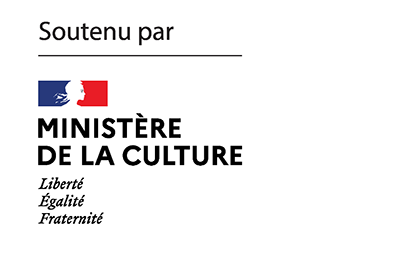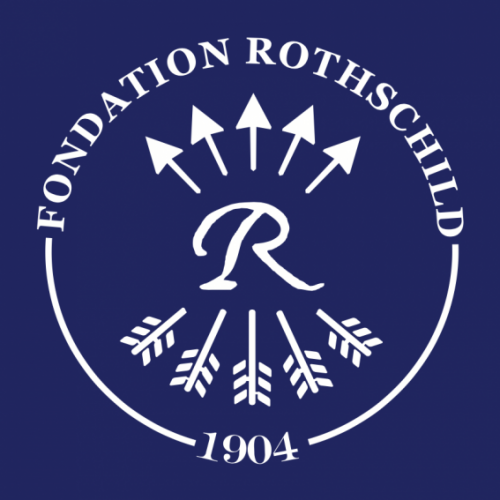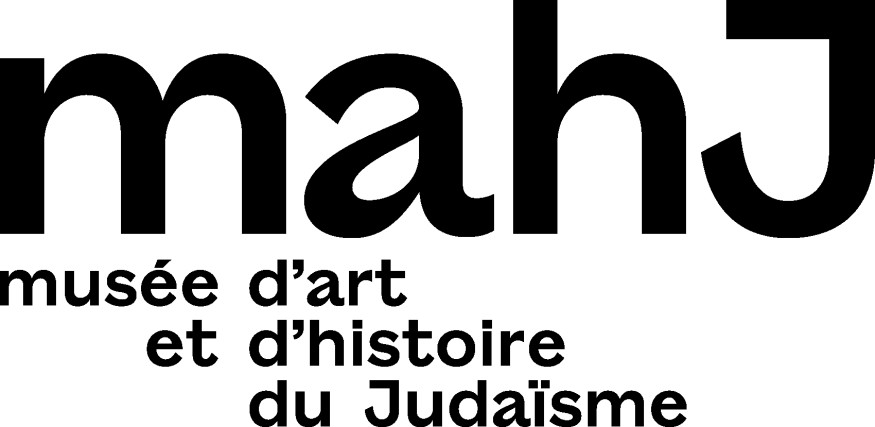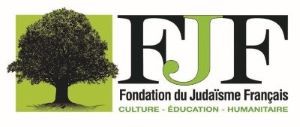In the aftermath of the October 7 attack, the expression “hayot adam,” used by several Israeli leaders to describe Hamas terrorists, shocked the public and stirred controversy. Variously translated as “animals,” “wild beasts,” and “human animals,” the phrase is striking for its symbolic violence and, for those sensitive to the resonances of the Hebrew language, for the echoes it finds in biblical and rabbinic texts. David Lemler undertakes an archaeology of this problematic term, drawing on the memory of pogroms and Nazism as well as the deeper roots of the representation of the non-Jew in traditional sources.
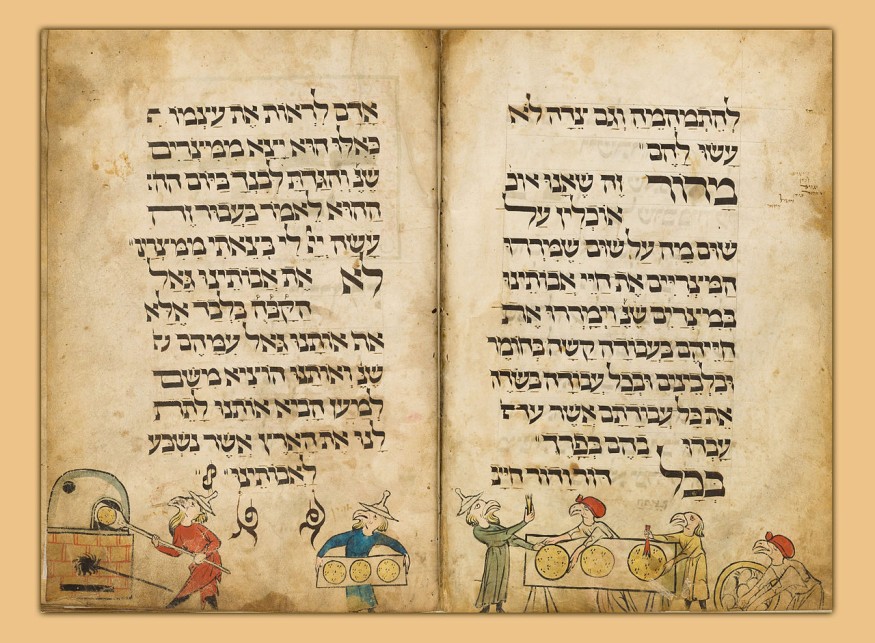
In a famous letter to his friend Franz Rosenzweig, Gershom Scholem wrote from Jerusalem in 1926 that the Jewish home in Palestine was threatened by a danger “much more uncanny than the Arab nation, and [which] is a necessary result of the Zionist enterprise”, i.e., the “actualization of the Hebrew language.” In a surprisingly elevated tone, he warned that “the religious power of that language,” largely ignored by speakers of modern Hebrew, might one day “turn violently against those who speak it.” In the terrible context of a particularly bloody episode in the Israeli-Palestinian conflict, a Hebrew expression has emerged from the abyss of a secularized language. The prophecy of doom of the great historian of the Kabbalah calls us to worry about its violence and its traditional charge. For if the aggressor is indeed terrible, so is the word chosen to name him.
Zeva‘ah : dread as an event
In the aftermath of the Hamas attack, in the midst of the horror, a recurring expression appeared in the speeches of Israeli leaders of all stripes to describe the enemy—”hayot adam”. The expression, relentlessly repeated in the media and on social networks, has been translated in various ways—”animals,” “savages,” “human animals,” “wild beasts”—and has sparked heated controversy. Personally, like many others, I didn’t discover the extent of the atrocities committed the day before until the evening of Sunday, October 8, when I reconnected with the world after the festivities. During the day, the words had already been spoken, underlined, and sanctified by President Isaac Herzog in a solemn address to the nation—”We have all seen our enemies, attacking with inhuman cruelty the elderly, women, families, children […]. Hayot adam, yes, monstrous hayot adam, who strike indiscriminately; who slaughter and kidnap babies and grandmothers. […] These are your enemies, Israel, and we will prevail over them”. At a crisis meeting the following day, Defense Minister Yoav Galant said—”We are imposing a complete blockade on Gaza City. No electricity, no food, no water, no fuel. We are fighting hayot adam and acting accordingly.” The phrase was later echoed by Benjamin Netanyahu. My horror at the massacre was matched by my horror at this expression.
The expression is frightening because, as it designates a monster, it is itself monstrous, linking the name of man (adam) to that of wild beasts (hayot) in a syntactical association that is difficult to analyze. The grammatical link that unites these two terms, designated by the technical term “semikhut” (often meaningfully translated in this context as “annexation”), usually expresses possession. Out of context, we would spontaneously translate “man’s wild beasts”. Here we understand that something else is at play, perhaps (as a linguist friend suggests) a genitive partitive—”wild beasts among men,” “beasts that are in man,” “beasts in human form,” or a pure and simple hybridization : “beast-man.”
It is horrifying because it dehumanizes the enemy in response to the absolute violence of the attackers, who deny the humanity of both Jewish and non-Jewish Israelis. The precise context of horror at the discovery of horror opens a rupture in discourse and the imaginary. By assimilating the terrorist to an animal, it prepares minds for the measures that will follow, which will necessarily affect the population of Gaza, reduced to a large biopolitical body, far beyond the members of Hamas alone.
It’s also horrifying because it tells us exactly what terror is. In the days that followed, the Israeli press used the word “zeva’ah” to describe the attack itself, which can be translated as “horror,” “amazement,” or “dread.” This biblical term appears in an imprecatory verse in Isaiah (28:19) —And it shall be sheer horror to grasp the message [of the plague that will fall on you] . A verse that resonates with another imprecation in Deuteronomy, where we find the equivalent term za’avah—The LORD will put you to rout before your enemies; […] and you shall become a horror to all the kingdoms of the earth [1]. In his classic commentary on the Torah, Rashi glosses “za’avah“—”fright and trembling: it means that all who will hear of thy afflictions will tremblingly move away from you and will say, ‘Woe upon us, would that there should not befall us as has befallen them!’ “. As in these verses, the event of October 7 itself could be characterized by the effect it had on those who witnessed its macabre spectacle, which the assailants took great care to stage. To understand the event, we must reflect on this affect and the reactions it makes possible.
In the third part of his essay On Suicide Bombing (2007), the anthropologist Talal Asad examines the reasons for the horror that suicide bombings evoke in Western societies, compared to the relative indifference to civilian deaths caused by state military operations (such as the war in Afghanistan from 2001 or in Irak in 2003). Apart from the fact that the victims are arbitrarily designated civilians with whom Western audiences can easily identify, he argues that what terrorist attacks brutally challenge are the boundaries of collective identity through their unpredictability, the assault on everyday certainties, and the dislocation of bodies they imply. Horror reflects this loss of identity.
The attack of October 7 began with the spectacular destruction of a border that was thought to be unbreakable. The expression that emerged in the midst of the horror can be understood as an attempt to re-establish this self-boundary—we humans, they animals. But it does so in a very strange way: by juxtaposing man and animal, it preserves the trace of the moment of indistinction when the boundary between “us” and “them” was abolished.
It should be recalled that, in a cynical reversal that seems to be part of a pre-planned scenario, a Hamas communiqué of October 9 referred to Israel as “an enemy that does not understand the language of humanity and ethics,” and concluded, “so we will speak to it in a language it understands.” In the martial rhetoric of both camps, the stakes are set—the enemy is the one who undermines the boundaries of the human. The dehumanization of the other in the act of slaughter is mirrored by the dehumanization of the other in discourse, opening the door to other discourses and other facts.
A response to the animalization of Jews
How is it possible that in these horrific circumstances, such a phrase could come out of the mouths of Israeli leaders, whether from the left (Herzog), the center-right (Galant), or the radical nationalist right (Netanyahu)? Certainly, the phrase resonates with similar expressions heard elsewhere on the occasion of outbreaks of violence. It’s no longer surprising to find references to “barbarism” in media-political discourse about terrorist and Islamist groups such as the Islamic State, with which Israeli leaders, followed by other Western leaders, were quick to equate Hamas. In another context, a minister and a president in France recently spoke of the “ensauvagement of society” following the riots provoked by the death of a young driver of North African origin who refused to submit to a police check. In a sense, hayot adam is simply the Hebrew version, imported from European languages, of the ancient Greek distinction between the native and the barbarian, and its return in a postcolonial context—we the humans, they who have human form, articulate sounds, but don’t really have logos. However, because of its singularity, it seems to me to call for a more specific genealogy, because it very explicitly invokes the name of man in a specifically Jewish conception, “Adam.”
The expression hayot adam, it should be noted from the outset, was not invented for this occasion. It is regularly used in everyday speech or in social networks to condemn the violence and cruelty of another and testify to the “animality” of the group to which he or she belongs (its grammar, again, is quite similar to that of the French “sauvage”). This other can, moreover, be Jewish, as demonstrated by a controversy in 2019 following a statement by the journalist Oshrat Kotler, according to which young soldiers sent to the West Bank return transformed into hayot adam. If the expression isn’t new, where did it come from?
It is a derivative and reactive product of a long history of bestializing Jews in discourse and representation. The assimilation of the Jew to the animal dates back as far as Paul (Philippians 3:2-3), who associates the “falsely circumcised” (carnal Jews) with dogs. This reference recurs in Christian, patristic, and medieval writings, where Jews are often compared to wild animals. The Koran is no exception, comparing Jews to “donkeys loaded with books” (62:5) or those who transgress the Sabbath to monkeys (7:163-166; 2:65-66; cf. 5:59-60). From the 13th century onward, representations of Jews as pigs (Judensau) adorned churches in Germanic regions. A proverb reported in Ernst Hiemer’s anti-Semitic anthology Der Jude im Sprichwort der Völker (1942) reads—”The Jew may have the human wrapping/ But he lacks what makes him human inside” (Der Jude hat wohl des Menschen Gestalt, / Doch fehlt ihm des Menschen innerer Gehalt). The assimilation of Jews to vermin, in modern and then Nazi anti-Semitic rhetoric, making their lives “infrahuman,” eliminable, and to be exterminated, thus has a long past[2].

The Jewish response to this animalization is twofold—internalization and specular projection. A famous Passover Haggadah, dating back to around 1300 and produced in Southern Germany, depicts Jews with bird heads, with the Jewish illuminator proudly emphasizing their distinction from non-Jews. This is just one example among many other medieval Hebrew manuscripts offering similar zoomorphic representations of Jews. Modern Jewish literature is rich in animalistic metaphors that internalize and impart a metaphysical dimension to this bestialization (think of Kafka’s Metamorphosis, for instance). On the other hand, Jews turn the reference to bestiality against their oppressors.
Wilde khaye/hayot adam—From the wild beast to the Adam-like wild beast
Our expression thus likely derives from a Yiddish expression, “wilde khaye,” composed of the Germanic adjective for “wild” and the Hebrew “hayah,” meaning “wild beast,” hence literally translating to “wild wild beast.” This expression, describing unrestrained human behavior (e.g., “dancing like wild beasts”) and sometimes used as an insult, eventually came to predominantly denote the extreme violence of attackers in descriptions of pogroms. “Hayot adam” seems to have made its appearance in Eastern Europe in Hebrew texts that transpose such descriptions from Yiddish into Hebrew between the wars (for instance, in the poem “Nefilim benei ‘anaq” by Polish poet Shlomo Stein, written in the 1930s following Hitler’s rise to power). Post-war, its use is largely reserved for describing Nazis. For instance, a version of the Yizkor (the memorial prayer) for Yom HaShoah (Holocaust Remembrance Day in Israel) includes the phrase “May the people of Israel remember their beloved children […] taken from their parents’ arms by a beast in human form (hayeto adam) and led like cattle to the slaughterhouse.”
I’ll leave it to specialists in modern literature to trace the precise history of the appearance of the Hebrew expression. Yet, two notable elements stand out in this brief recapitulation. The use of the expression in the days following October 7 indicates that Hamas’s operation achieved one of its goals by awakening memories of pogroms and Nazism-demonstrating Israel’s inability to prevent “it” from happening again and thereby undermining one of its key sources of legitimacy. Furthermore, in the transition from Yiddish to Hebrew in the expression denoting bestiality and human inhumanity, it is the signifier “man” that makes its appearance-wild animals become Adam-like animals.
Ismaël, “the onagre man“ (pere adam)
The invocation of the man’s name, adam, is far from insignificant. It introduces a whole referential charge into the discourse and invites us to reflect on the traditional unconscious of the Hebrew language that Scholem speaks of. While the expression hayot adam is relatively recent, its use in the precise context of the day after the attack is akin to the return of a distant repression, bringing into play Israel’s self-conception as opposed to that of the non-Jews, thought of by analogy with the relationship between man and beast.
First of all, it’s noteworthy that the expression that comes closest to hayot adam is a biblical expression used in connection with Ishmael. Hagar, pregnant with the child of Abraham (then called Abram), after fleeing from her mistress Sarah (then called Sarai), receives from a divine messenger the promise of numerous offspring (Gen 16:10) and, concerning the child she bears, the following announcement—”He shall be a wild ass of a man (pere adam); His hand against everyone and the hand of all against him“[3]. Pere adam[4] is built on the same “monstrous” model as hayot adam. The unborn child will be a wild human donkey. A midrash (which, it should be noted, predates the birth of Islam) explains—”Rabbi Yoḥanan said: This means that everyone else would inhabit settlements, but he would inhabit the wilderness. Rabbi Shimon ben Lakish said: A wild man—in its plain sense. Most people plunder wealth, but he plunders people.” His hand will be against everyone and everyone’s hand against him (kol bo). Read it as his dog (kalbo) —he and a dog are equal; just as the dog eats carcasses, so, too, he eats carcasses.” [5]Even before his birth, Ishmael is relegated to the margins of humanity, likened to an animal with a human face, because of his nomadic lifestyle and ethos. For its part, the Zohar (II, 86a) emphasizes the hybridity of the expression that contains the name Adam—Ishmael is Adam because, like Israel (and “Israel is called Adam,” as we shall see), he has circumcision; but he is “wild ass” because he does not respect the other commandments of the Torah. Given the essentialist readings that look to the sources for transhistorical keys to understanding Israel’s relationship with other peoples, it’s easy to understand the kind of representations that such a text can nourish about Ishmael, who is identified with the ancestor of Arab-Islamic civilization. Incidentally, the terms “pere adam” and “hayot adam” are sometimes used interchangeably in modern Hebrew.
Adam’s name as a way to become human
That Israel’s relationship with the nations can be expressed in such terms in Jewish tradition is only possible because of a human-animal hybridity that lies at the very foundation of biblical-rabbinic anthropology. In the first account of the creation of the world in the first chapter of Genesis, man is created on the sixth day at the same time as all the other animals that move on the earth (as opposed to sea creatures and birds). If the distribution of creatures on each of the six days represents a hierarchical division and classification of all that exists, then man and the “land” animal belong to the same class. Consequently, the “speciesist” superiority of man over animals asserted in the famous verse Genesis 1:26 is fraught with ambiguity—And God said: Let us make man in our image, after our likeness. They shall dominate (redu) over the fish of the sea, the birds of the sky, the cattle, the whole earth, and all the creeping things that creep on earth. This ambiguity is the starting point for a midrash that plays on the proximity of the roots radah (to rule) and yarad (to descend)—”Rabbi Hanina said: If they merit it, [they will] dominate (redu), but if not, they will fall (yerdu). Rabbi Yaakov of Kefar Hanin said: One who fulfills in our image, in our likeness will dominate; those who do not fulfill in our image, in our likeness will fall [yerdu].”[6].
Man who is not “in the image and likeness” finds himself lowered among the animals, subject to beasts more powerful than himself. “Image and likeness” is not an ontological given that defines man’s nature. On the contrary, it is man’s task to make himself worthy of it, and the relationship of domination or submission to the animals is a sign of this. Another text says—”Rami bar Hama says: The wild beast has no power over man (adam) unless he appears to him like an animal, according to the verse [when they are] like animals, they perish (Ps 49:13)”. [7]. These texts introduce the possibility that a man may not be truly Adamic. While the Adamic being is defined precisely by its resemblance to the Divine, many humans have the appearance of humanity but are in no way different from other animals. Two categories are thus distinguished among human beings—human beings and animals in human form, the latter clearly constituting the majority of the human race, regardless of any reference to the difference between Israel and the nations.
If this is adam..
In the biblical text, adam is sometimes the proper name of the first man, and therefore the name of generic humanity, and sometimes one of several terms used to refer to an individual human being. Its presence in a verse in this second sense is questioned by the midrash, especially when the verse refers to a law given at Sinai, which therefore applies only to Israel and not to all mankind. Why use the generic name Adam rather than other more neutral terms (such as ish, a man, or nefesh, a soul/person)? This question calls for two diametrically opposed interpretations: one in the direction of a universalization of Jewish law, the other in the direction of a Jewish appropriation of the name of man.
From the first, centrifugal movement, emerges this famous Talmudic passage—hRabbi Meir used to say: From where is it derived that even a Gentile who engages in Torah study is considered like a High Priest? The verse states—”‘You shall keep My laws and My rules, by the pursuit of which man (ha-adam) shall live: I am the LORD.’ (Lv 18, 5). It is not stated Priests, Levites, and Israelites, but rather the general term ‘person.’ From here you learn that even a Gentile who engages in the study of Torah is like a High Priest.”[8]
The second, centripetal movement, highlights a passage that expounds on a verse from Numbers regarding the impurity of corpses—”This is the ritual: When a person (adam) dies in a tent, whoever enters the tent and whoever is in the tent shall be unclean seven days” (Numbers 19:14). “Rabbi Shimon ben Yoḥai says that the graves of Gentiles do not render one impure, as it is stated And you, My sheep, the sheep of My pasture, are man (adam)” (Ez 34:31), which teaches that you are called ‘man,’ but Gentiles are not called ‘man’.”[9]OctoOc
In the first case, the presence of the word adam universalizes what is at stake in Torah study. In the second, the presence of the same word echoed in a verse of Ezekiel where it certainly refers only to Israel, serves to limit the extension of the laws of impurity to Jewish corpses. As is often the case, the midrash seems to play with a certain arbitrariness and inconsistency. But as is almost always the case, its choices are clearly motivated by the issues at stake in each context. Here, the point is to assert that the study of Torah, of intelligence, overrides all rules of social precedence, even the distinction between Jews and non-Jews (the High Priest in no way takes precedence over the Torah scholar, whoever he may be). This is about reserving for Israel the question of holiness, which in its biblical conception is inseparable from the distinction between the pure and the impure.
Adam and the rest of mankind
But now a word has been dropped and is working its way into the subconscious of the language: “You are called adam, and Gentiles are not called adam”. We’ve seen that this statement is not universally true, that it is in fact entirely limited to a specific problem. We have also seen that being named adam is not a guarantee of true humanity, but rather the burden of making oneself worthy of the name. The Talmud occasionally compares certain Jews (those who vehemently refuse to study Torah, the amei ha-arets) to animals[10]. The signifier, however, resonates and is easily understood as a promise of exclusive humanity.
For if Gentiles are not called adam, then what are they? Just think of some delicate biblical exegesis that compares non-Jews (or some of them) to animals, according to a circumscribed and local aspect. Thus, the gentile slave is compared to a “donkey” in one reading of Genesis 22:5 because, unlike animals, he is not inscribed in a symbolic lineage[11]. One verse further states that the flesh of a wounded animal (terefah), which has become unfit for consumption by Jews by virtue of the rules of kasherut, is to be “cast to the dogs” (Exodus 22:30). The implication is that it is not forbidden to make a profit from it, and therefore it may be sold to gentiles[12]. Neither the verse nor the midrash states that non-Jews are dogs, but the shortcut is easy and the imagination often takes the quickest route. Especially since, in the West, Jews are constantly compared to dogs. Let’s not forget other verses that use the metaphor of wild animals to evoke Israel’s enemies—”I will loose wild beasts (hayat ha-sadeh), against you, and they shall bereave you of your children and wipe out your cattle and they shall decimate you” (Lev 26:22).
The cry of Israeli ministers that dehumanize the terrorist and, through him, the Palestinian, reflects both the reawakening of memories of the Jews’ worst oppressors and the unconscious residue of a cursory reading of some difficult passages from traditional texts. Passages that, incidentally, have not escaped the notice of other kinds of enemies anthologists fond of decontextualized quotations aimed at showing the misanthropy of the Jews, from medieval trials of the Talmud to the Fachosphere. These texts must be read all the more carefully, lucidly, and critically because, reduced to an anti-Semitic quotation or summed up in a cry of horror, they do no more than perpetuate hatred and legitimize indiscriminate violence.
In the face of the repressed Hebrew language that has returned in the wake of October 7, the end of Scholem’s prophetic letter seems disturbingly topical—”May the levity that has accompanied us on this apocalyptic path not lead us to our destruction.”
________________________________________
David Lemler
David Lemler is a philosopher and specialist in medieval Jewish thought. He is an Associate Professor in the Departement of Arabic and Hebrew Studies of Sorbonne University. His publications include “Création du monde et limites du langage. Sur l’art d’écrire des philosophes juifs médiévaux“, Vrin, 2020.
Notes
| 1 | Deut 28:25. |
| 2 | See Noam Pines, The Infrahuman: Animality in Modern Jewish Literature, 2018 and Jay Geller, Bestiarium Judaicum: Unnatural Histories of the Jews, 2018 |
| 3 | Transl. Jewish Virtual Library |
| 4 | Translated as “an onager man” by Ekaterina E. Kozlova in Vetus Testamentum 67 (2017) 16-41 |
| 5 | Bereshit Rabbah, 45, 9 |
| 6 | Bereshit Rabbah, 8, 12. |
| 7 | Babylonian Talmud=BT, Sanhedrin, 38b |
| 8 | BT, Avodah Zarah, 3a |
| 9 | BT, Baba Metzia, 114b; Keritot, 6b; Yevamot, 61a |
| 10 | For example BT, Pesahim, 49b |
| 11 | BT, Ketubbot, 111a et passim |
| 12 | Cf. Mekhilta de-Rabbi Ishma’el and Deut 14:21 |



